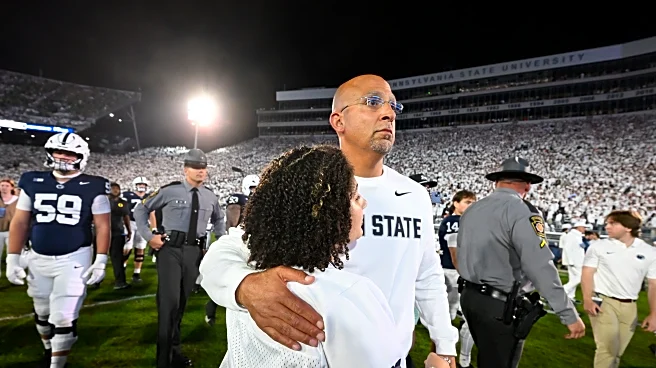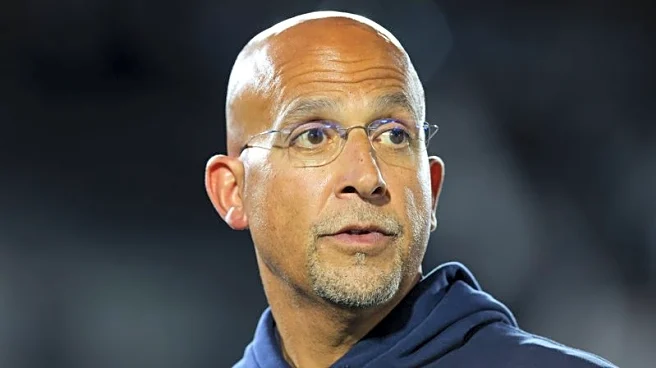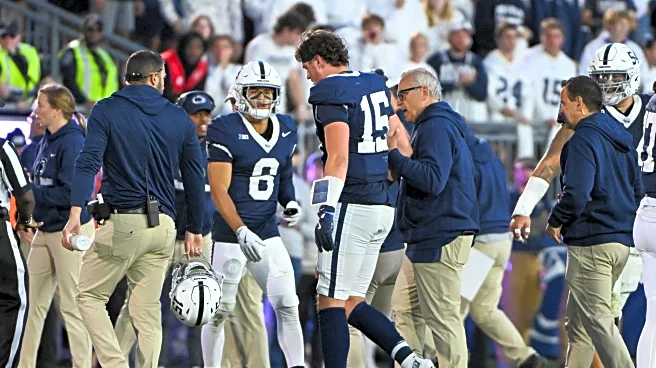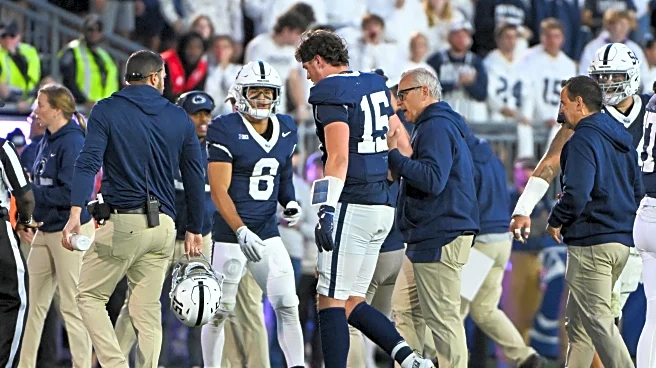What's Happening?
Penn State University has announced the firing of head coach James Franklin after a series of disappointing performances in the Big Ten conference. Franklin, who was in his 12th season with the Nittany Lions, saw his team drop to 0-3 in conference play following a narrow loss to Northwestern. This decision comes after Penn State, once ranked No. 2 in the preseason AP Top 25, suffered unexpected defeats, including a loss to a previously winless UCLA. Associate head coach Terry Smith will serve as interim coach for the remainder of the season. Franklin's tenure included a Big Ten Championship and a College Football Playoff appearance, but recent struggles against top-ranked teams contributed to his dismissal.
Why It's Important?
The firing of James Franklin marks a significant shift for Penn State, a program with high expectations and a storied history. Franklin's inability to secure victories against top-tier teams, particularly in the Big Ten, has been a point of contention. His departure opens the door for new leadership that could potentially elevate the program to consistent national championship contention. The financial implications are notable, with Penn State owing Franklin approximately $50 million due to his contract terms. This change could impact recruiting, team morale, and the university's athletic strategy moving forward.
What's Next?
Penn State will begin its search for a new head coach, with several candidates already being discussed. The university aims to find a leader who can navigate the challenges of the Big Ten and compete for national titles. Potential candidates include Matt Rhule, Curt Cignetti, and others with strong coaching backgrounds. The decision will be crucial in shaping the future of Penn State football, as the program seeks to regain its competitive edge and meet the high expectations of its fan base.
Beyond the Headlines
Franklin's firing highlights the pressures faced by college football coaches in maintaining high performance levels. The decision underscores the importance of winning key games and the impact of financial contracts in collegiate sports. It also reflects the broader trend of universities making swift changes to align with competitive goals, emphasizing the business aspect of college athletics.













